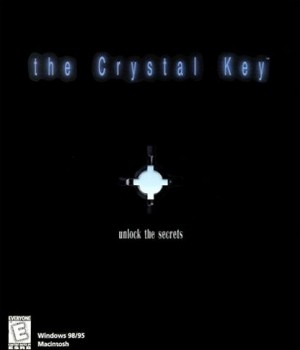
Cyan, Inc., also known as Cyan Worlds, Inc., is an American video game developer and publisher based in Mead, Washington. Founded as Cyan Productions by brothers Rand and Robyn Miller in 1987, the company created the Myst series.
Legend Entertainment Company was an American developer and publisher of computer games, best known for creating adventure titles throughout the 1990s. The company was founded by Bob Bates and Mike Verdu, both veterans of the interactive fiction studio Infocom that shut down in 1989. Legend's first two games, Spellcasting 101: Sorcerers Get All the Girls and Timequest, had strong sales that sustained the company. Legend also profited from negotiating licenses to popular book series, allowing them to create notable game adaptations such as Companions of Xanth and Gateway. Legend also earned a reputation for comedic adventures, with numerous awards for Eric the Unready in 1993. As the technology of the game industry changed, Legend continued to expand its game engine to take advantage of higher graphical fidelity, mouse support, and the increased media storage of the compact disc.

The Longest Journey is a 1999 point-and-click adventure video game, developed by Norwegian studio Funcom for Microsoft Windows; an iOS version was later developed and released on October 28, 2014, but was never upgraded for compatibility for the 64-bit only iOS 11 and later.

Myst III: Exile is the third title in the Myst series of graphic adventure puzzle video games. While the preceding games in the series, Myst and Riven, were produced by Cyan Worlds and published by Broderbund, Exile was developed by Presto Studios and published by Ubi Soft. The game was released on four compact discs for both Mac OS and Microsoft Windows on May 8, 2001; versions for the Xbox and PlayStation 2 were released in late 2002. A single-disc DVD version was later released for Windows and Mac OS.
Obsidian Entertainment, Inc. is an American video game developer based in Irvine, California and part of Xbox Game Studios. It was founded in June 2003, shortly before the closure of Black Isle Studios, by ex-Black Isle employees Feargus Urquhart, Chris Avellone, Chris Parker, Darren Monahan, and Chris Jones.
The Creative Assembly Limited is a British video game developer based in Horsham, founded in 1987 by Tim Ansell. In its early years, the company worked on porting games to MS-DOS from Amiga and ZX Spectrum platforms, later working with Electronic Arts to produce a variety of games under the EA Sports brand. In 1999, the company had sufficient resources to attempt a new and original project, proceeding to develop the strategy computer game Shogun: Total War which was a critical and commercial hit, and is regarded as a benchmark strategy game. Subsequent titles in the Total War series was built following the success of Shogun: Total War, increasing the company's critical and commercial success.

Robert Bates is an American computer game designer. One of the early designers of interactive fiction games, he was co-founder of Challenge, Inc., which created games in the 1980s for the pioneering company Infocom. After Infocom's dissolution in 1989, Bates co-founded Legend Entertainment to continue publishing games in the Infocom tradition, but with added graphics. Notable games that he has designed, written, or produced include Unreal II (2003), Spider-Man 3 (2007), and Eric the Unready (1993), listed as Adventure Game of the Year by Computer Gaming World magazine and also included on the 1996 list of "150 best games of all time". In 1998 he wrote the award-winning game Quandaries for the U.S. Department of Justice. He has twice been the chairperson of the International Game Developers Association, which honored him with a Lifetime Achievement Award in 2010. Bates has written extensively about game design and development in works such as the 2001 book Game Design: The Art and Business of Creating Games, which is commonly used as a game design textbook in college courses. From 2011–2014, Bates was Chief Creative Officer for External Studios at Zynga. He continues to work as an independent consultant with various publishers in the games industry.

Runaway: A Road Adventure is a 2001 graphic adventure game developed by the Spanish company Pendulo Studios and published by Dinamic Multimedia. It follows the story of Brian Basco, an American college student on the run after he unwittingly saves a murder witness named Gina Timmins from assassination by the New York Mafia. Searching for clues about a mysterious crucifix linked to the murder, Brian and Gina embark on a cross-country journey through the United States while pursued by two Mafia hitmen. The player assumes the role of Brian and explores the game world while collecting items, solving puzzles and conversing with non-player characters.

Sphinx and the Cursed Mummy is a 2003 action-adventure video game developed by Eurocom and published by THQ for GameCube, PlayStation 2, and Xbox. A version for mobile phones was released in 2004. THQ Nordic published a high-definition remaster for personal computer systems in 2017, and Nintendo Switch in 2019.

The Omega Stone is a Microsoft Windows puzzle adventure game developed by American studio Omni World Studios. It was the sequel to the game Riddle of the Sphinx: An Egyptian Adventure and was released by DreamCatcher Interactive on March 18, 2003.

Atlantis II, known as Beyond Atlantis in North America, is a 1999 graphic adventure game developed and published by Cryo Interactive. The sequel to Atlantis: The Lost Tales, it follows the story of Ten, a mystical being that travels across time to defeat the Bearer of Dark. Players assume the role of Ten and solve puzzles in locations such as Ireland, the Yucatán Peninsula of Mexico and China.

Atlantis III: The New World,, is a 2001 fantasy adventure video game developed and published by Cryo Interactive, with Dreamcatcher Interactive publishing the game in North America. David Rhodes composed the musical score. It is the third game in the Atlantis series by Cryo, as well as the last one made before Cryo's closure. It was followed by Atlantis Evolution in 2004.

Kheops Studio was an independent video game development studio created in September 2003. Its games were published by Microids, which acquired the brand and intellectual property as insolvency assets of Cryo Interactive in 2002. The company was co-founded by Benoît Hozjan, who also served as the creative director for the studio and Stéphane Petit, who served as technical director. Kheops developed adventure games for the PC platform and released several major successful games. The studio is best known for creating games that have been described by the developer as "cultural entertainment", that is, games which are heavily drawn from historical or literary sources to include a mixture of history and fiction. After filing for bankruptcy, the studio was closed down in January 2012.

The Crystal Key is a 1999 graphic adventure video game developed by Earthlight Productions and published by DreamCatcher Interactive. A work of science fiction, it casts the player as an interstellar explorer on a quest to save Earth from Ozgar, a malevolent alien conqueror. The player uses portals to traverse multiple planets, including desert and jungle worlds, while collecting items and solving puzzles. The Crystal Key was conceived by John and Jennifer Matheson in the mid-1990s, and it underwent a five-year creation process hampered by problems with its technology. It was signed by DreamCatcher as part of the publisher's strategic push into the adventure game genre.

Dracula 2: The Last Sanctuary is a 2000 graphic adventure video game developed by Wanadoo Edition and jointly published by Index+, France Telecom Multimedia, Canal+ Multimedia and Cryo Interactive. Originally released for Windows and Mac OS, it was ported to the PlayStation in 2002. A modified version developed and published by Microïds was released for iOS and OS X in 2012 and for Android in 2013. In 2014, the remade version was made available on Steam. There were dubbing mutations in French, English, Spanish, German, Italian, Hungarian and Czech.

Egypt 2: The Heliopolis Prophecy is an adventure video game developed and published by Cryo Interactive for the PC and PlayStation in 2000. It was released for Mac OS X in May 2012. Egypt 2 follows Egypt 1156 B.C. and is followed by Egypt III.

Egypt III: The Fate of Ramses, known as The Egyptian Prophecy in North America, is a 2004 graphic adventure game developed by Kheops Studio and published by The Adventure Company. The player must solve an array of ancient riddles that will help a dying Pharaoh survive and restore Egypt to glory. The game is the third and final game in the Egypt trilogy, following Egypt 1156 B.C. and Egypt II: The Heliopolis Prophecy. In 2010–2012, Microïds released an adaptation of the game called Egypt: The Prophecy, split into parts, for the Apple iPhone.

The New Adventures of the Time Machine is an adventure video game released in 2000, developed and published by Cryo Interactive. It is based on H. G. Wells' novella The Time Machine.

Divinity: Original Sin is a role-playing video game developed and published by Larian Studios. The fourth main entry in the Divinity game series, it is a prequel to the original game Divine Divinity, and to the other main games in the series. It was first released on Microsoft Windows on 30 June 2014.
















